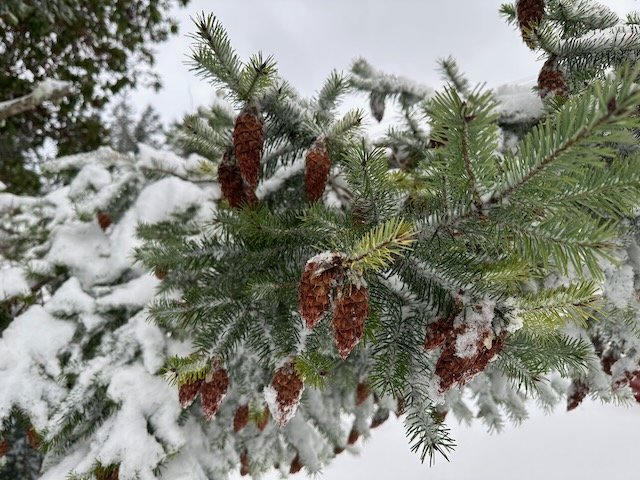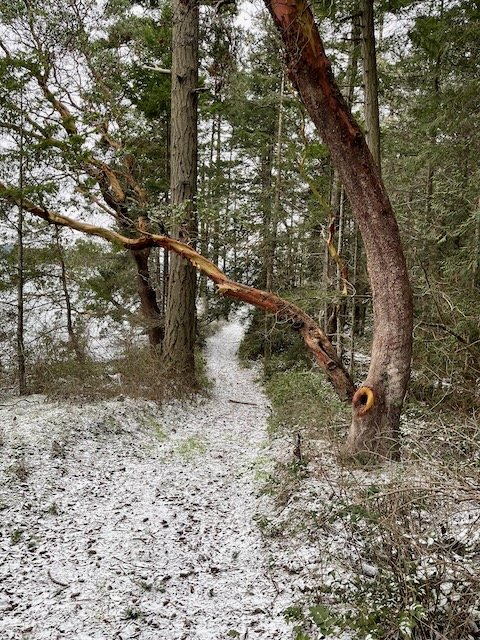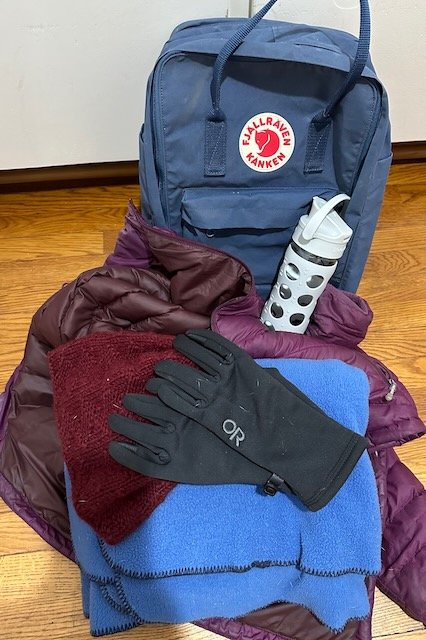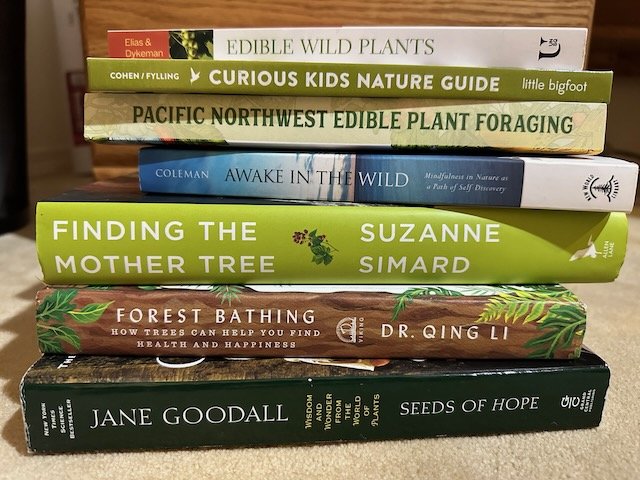Renewal through immersion in Great Nature

What is Forest Bathing?
Forest Bathing (also called Forest Therapy or Shinrin Yoku) is a guided practice leading us to awaken our senses. In the setting of the Forest, we can quiet our mind and find a deepened connection with Great Nature, the kami, and our selves. Your guide will take you through a structured experience with a sequence of invitations.
Moments of silence, meditation, solitude and sharing build a rich experience where the Forest is the therapist, and the guide opens the door.
Experiencing Forest Bathing in the environment of the Sacred Forest (Chinju no Mori) renews and centers your spiritual self.
About Forest Bathing
Many indigenous peoples have had a deep-seated relationship with nature for centuries. As modern life developed, many of us have transitioned away from this reciprocal relationship with nature.
Forest Bathing, also known as Forest Therapy, is inspired by the Japanese practice of Shinrin Yoku 森林浴 which translates literally as “Forest Bath.” The nuances of this terminology are:
Bathing as immersion in the forest atmosphere
Bathing as taking in the forest through our senses
Bathing as being in the present moment, being in the here and now (Naka Ima 中今 or, in the “middle of now”)
Forest Bathing is more than just a walk in the woods. It is a practice to develop reciprocal relationships with Great Nature. It is an open ended practice; there is no prescription for what a person “should” experience or what benefits they “should” receive. Instead, it is a practice to develop and deepen the relationship of reciprocity, in which the forest and the practitioner work together to support wholeness and wellness for both humans and the more-than-human-beings.
Forest Bathing is not a one-time event. It is a practice that is deepened by returning again and again.


What are the benefits?
There is a lot of evidentiary research that confirms the positive effects of nature on our well being.
The results are compelling that we experience greater emotional well-being when we spend time in the Forest.
There is also substantial evidence of physical benefits, such as a boost to our immune system. The trees emit phytoncides—airborne antibacterial and antifungal chemicals that help them protect themselves from insects and disease. When we breathe in these phytoncides, our bodies respond by increasing our NK, or natural killer cells. NK cells fight tumor and virus infected cells in our bodies. As well, spending time in nature reduces blood pressure as well as reducing the stress related hormones cortisol and adrenaline.
What to expect
You will be guided by an ANFT trained Nature and Forest Therapy Guide. We will walk very slowly through the forest, interspersed with stops along the way. It is not exercise, and it is not a naturalist session. Your guide will offer a series of sensory invitations designed to open the door to the healing properties of nature. These invitations encourage you to slow down, focus on your senses, and deepen your connections with Great Nature. Each participant will have a unique experience; there is no incorrect way to receive an invitation.
The walk is typically 1 ½ to 2 hours long. The distance covered is minimal—less than 1 kilometer. We will focus on being fully present in the now, rather than moving through the forest. The guide will suggest or invite you to explore the forest in a specific mindful way, followed by a sharing circle. Sharing—listening and being heard—helps to deepen and integrate participants’ experiences. The walk will end with the sharing of tea, and discussion of some of the science and nature information related to the experience.
Each walk will be a different experience, but participants generally report elevated mood, increased focus, and a heightened sense of spirituality that lasts for days after the walk.
Do I Need a Guide?
A Forest Guide gently helps participants tune into their senses, shifting their attention to being fully present in the “now.” A guide also “holds the container” for the experience so that participants can fully let go without worrying about time, direction, or other preoccupations. A Guide will not prescribe the experience you should have during the walk, but helps to awaken the connection to Great Nature that is within all of us.



What to bring
Dress for seasonal weather, plus an extra layer! Because we are moving slowly, your body will not be warming up from exercise. Even in summer months, ocean breezes can be chilly.
Rain jacket/umbrella (if possible weather ) Walks continue, rain or shine
Hat, gloves (in cool weather). A blanket to wrap around you (optional)
Water bottle
It’s helpful to have your extra items in a backpack or shoulder bag, so your hands are free as we meander on the trail.
We will provide a foam mat for sitting on the ground.
We will provide hot tea at the end of the walk.
Additional Resources
Reading list:
-
Forest Bathing (M. Amos Clifford)
-
The Hidden Life of Trees (Peter Wohlleben et al)
-
Finding the Mother Tree (Suzanne Simard)
-
Awake in the Wild (Mark Coleman)
-
Forest Bathing: How Trees Can Help You Find Health and Happiness (Dr. Qing Li)
-
Fantastic Fungi documentary movie (book available, edited by Paul Stamets)
-
Braiding Sweetgrass (Robin Wall Kimmerer)
